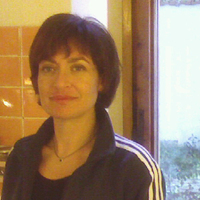Cristina Tonghini
Università Ca' Foscari Venezia, Dipartimento di Studi Umanistici, Department Member
- Islamic Archaeology, Islamic' Architecture, Military Architecture, Islamic Military Architecture, Islamic Art, Early and Medieval Islamic Art and Architecture, and 5 moreEarly Islamic Archaeology, Islam and the West, Medieval Islamic Ceramics, Archaeology of Mediterranean Trade, and Islamic military historyedit
This book presents the results obtained from the historical and archaeological investigations carried out in the framework of a project centred on the site of Shayzar, in Central Syria: Shayzar Project: study of the fortified settlement... more
This book presents the results obtained from the historical and archaeological investigations carried out in the framework of a project centred on the site of Shayzar, in Central Syria: Shayzar Project: study of the fortified settlement in Bilad al-Sham. On the basis of a detailed analysis of the archaeological evidence, and of the study of the written documentation available, the book examines the origins and the development of this fortification, especially in relation to the most crucial period as regard as the building of the citadel, i.e., the span of time that stretches from the 10th to the 13th centuries; it also discusses the development of building techniques in the context of military architecture.
Research Interests:
Research Interests:
The present article presents and discusses an assemblage of Early Islamic pottery excavated at the the site of Gir-e Gomel, in Iraqi Kurdistan. The thorough publication of a corpus of pottery from a well-defined chronological horizon aims... more
The present article presents and discusses an assemblage of Early Islamic pottery excavated at the the site of Gir-e Gomel, in Iraqi Kurdistan. The thorough publication of a corpus of pottery from a well-defined chronological horizon aims to contribute to a better understanding of the ceramic types used in the northern regions of the Early Islamic caliphate, and to the identification of regional patterns of circulation and consumption.
This paper presents a documentary and archaeological study of the watermills in Ottoman Mosul to gain a political and social-economic understanding of the waterresource management in Mosul and its northeastern hinterland in the early... more
This paper presents a documentary and archaeological study of the watermills in Ottoman Mosul to gain a political and social-economic understanding of the waterresource management in Mosul and its northeastern hinterland in the early modern period. Watermills are of importance to historians, as the simple buildings equipped with sophisticated hydraulic devices, for teasing out various strands of water-resource management and agricultural economies from a regional and longue-dureé perspective. By synthesizing historical and archaeological methodological approaches, this paper aims to address the questions of what historical legacy of Mosul was left to the Ottoman Empire regarding the water infrastructure, including watermills and irrigation systems, and what contribution the Ottoman administration made to the development of Mosul's water infrastructure. It presents an archaeological examination of a group of milling installations in Wadi Bandawai in the north of Mosul, demonstrating changes in settlement patterns during the long Islamic period, from the 7th to early 20th centuries, and also drawing attention to methodological problems with Islamic and Ottoman archaeology concerning the periodization of material culture.
Research Interests:
Research Interests:
The Community on the Illicit Trade in Cultural Material of the European Association of Archaeologists is briefly described, focussing on its history, principles and aims, as well as activities. The community's position concerning... more
The Community on the Illicit Trade in Cultural Material of the European Association of Archaeologists is briefly described, focussing on its history, principles and aims, as well as activities. The community's position concerning stewardship and commercialisation of cultural heritage material is laid out and its online strategy for raising awareness presented.
Research Interests:
The Early Islamic pottery excavated at the site of Gir-e Gomel, Iraqi Kurdistan
Research Interests:
Research Interests:
Research Interests:
Research Interests:
THE CASE OF SHAYZAR: 'CASTLE'OR FORTIFIED TOWN? 1 CRISTINA TONGHINI Abstract This paper can be regarded as an attempt at defining the function of the ancient settlement of Shayzar based on the archaeological evidence derived... more
THE CASE OF SHAYZAR: 'CASTLE'OR FORTIFIED TOWN? 1 CRISTINA TONGHINI Abstract This paper can be regarded as an attempt at defining the function of the ancient settlement of Shayzar based on the archaeological evidence derived from recent investigations carried ...
